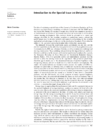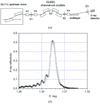issue contents
March 2006 issue

Cover illustration: Top left: Micro-pin array used in modern gas-filled detectors (see Smith et al., pp. 172-179), rare examples of fully custom-made detectors for synchrotron applications. New developments, such as this micro-pin array, dramatically increase the performance of gas-filled detectors, keeping them very competitive for many applications. Top right: PILATUS 1M hybrid pixel detector developed by the PSI/SLS group (see Broennimann et al., pp. 120-130). This represents a large step forward towards a large-area fine-grained counting detector. Bottom left: Multi-element avalanche photodiode detector developed by Hamamutsu and SPring-8 (see Baron et al, pp. 131-142). A step towards area detectors with nanosecond timing resolution. Bottom right: DEPFET structure developed by the MPI group in Munich (see Lutz, pp. 99-109). The detector allows for construction of large areas with excellent energy-resolving capabilities.
facility information
detectors

research papers
current events



 journal menu
journal menu




































